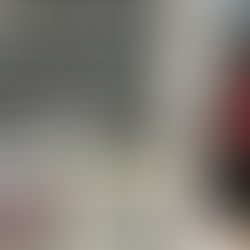Everything I Love, Disappears, Maj Rafferty, 17th January, 2020

Asylum for death objects, Amol K. Patil
How to love anything other than the possibility of ruin?
January 17th - February 15th, 2020 USSR, Mexico City
Amol K. Patil (India), Espartaco Martínez (Mexico), Helene Johanne Christensen (Denmark),
Linh Tutet Le (Denmark/Vietnam), Maj Rafferty (Denmark) & Morris Manuel Trujillo (Mexico)
Deciduous teeth become ruins of the mouth.
Like empires, they rise and, inevitably, fall again.
Buried in the red sand.
Remains of the stifled revolutions.
Found footage, debris of utopias
and broken tips of hair.
Remaining thoughts after a love affair
or a snake’s shedded skin.
Pyramids, squats and ambitious housing projects
abandoned before being complete.
How to love anything other than the possibility of ruin?
A romantic gaze and lust have left us at the feet of the ruin. In a longing for autenticity, voyage and nostalgia we have engaged with decay as a passage through times. Traveling in-between the past and the present, life and death, survival and extinction, balancing pre-figured categories and stages of life. A travel which uncovers the ambiguity of attraction; drawn towards decay, destruction and otherness only to the extent of our capacity to master or control it.
Mexico City, as we know it, was constructed on top of Tenochtitlan, the city built by the Aztecs and walled-in by the Spanish colonisers in the XVIth Century. The main cathedral was erected exactly above Tenochtitlán’s main temple. For decades now, every day a group of concheros gathers next to the cathedral to dance in order to bring the Spanish buildings down and allow for the resurrection of the Aztecs’ ruins. Our so-called since the notion of modernity was constructed on the illusion of the perpetually new, the
collapse of the possibility of novelty leaves the system no other option but to implode and start a self-ruination process from which to re-emerge. Contemporary societies cannot think outside wreckage. Wreckage on wreckage as Walter Benjamin noted. The mental configuration of our lives, our bodies and spaces are tainted with ideas of conquest. The post-modern self only finds satisfaction in the certainty and the ghost of devastation; as the validation of the passage of time, of the human agency in this planet as it is detached from its sacrality. Mexico City’s self-ruination continues on a daily basis. For the efficient, capitalized world there is only production when it leaves behind rubble.
How to love anything other than the possibility of ruin? is a group exhibition exploring the transformation and possibilities between life, love and decay. Through the works of six contemporary artists from Mexico, Denmark and India, the exhibition offers a broad approach on how we can understand temporary society of struggle and becoming in the light of decay. Instead of focussing on the material process of decay we approach the ruin rather as a perspective from where we look into temporary life of personal, social and structural processes; gentrification, archiving, belonging, otherness and corporality. We consider decay, not a distant otherness which we can remove ourselves from or control, but as a condition and possibility which we inhabit, collect, use, turn and fight against in order to love.
Curated by Frida Robles & Lasse Mouritzen













































